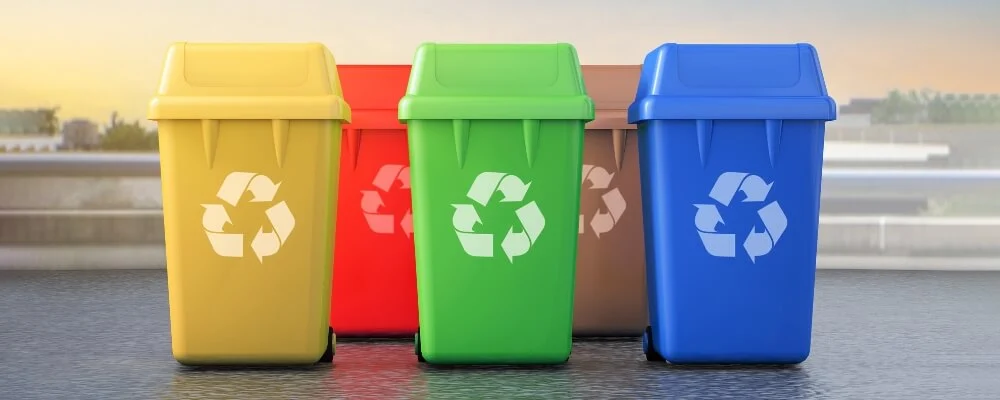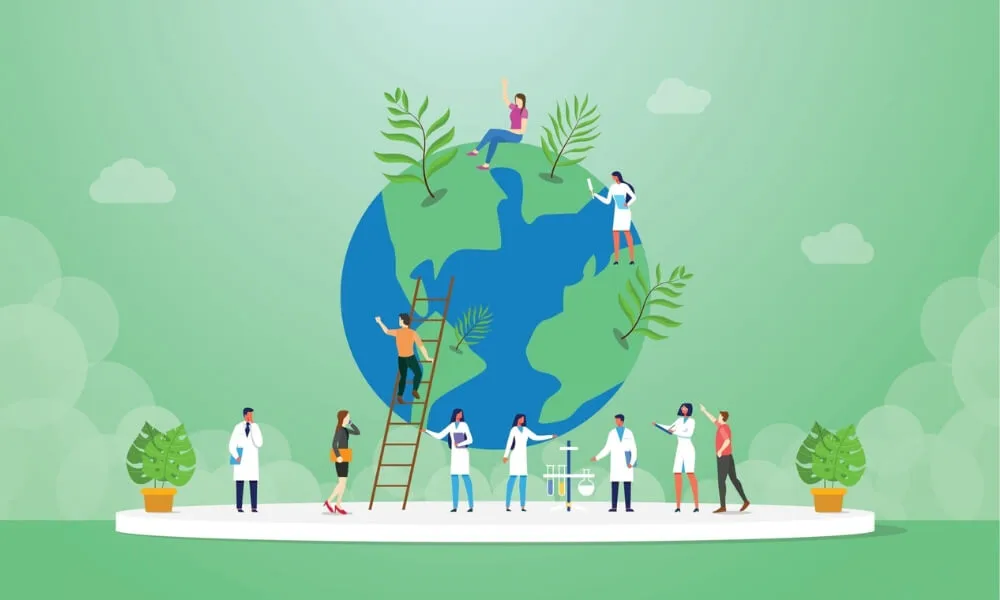In an ever-changing world with a growing population and increasing industrialization, the significance of maintaining a clean and healthy environment has never been more critical. Environmental hygiene is the cornerstone of safeguarding our planet’s well-being and preserving the health of its inhabitants. From the air we breathe to the water we drink and the spaces we inhabit, environmental hygiene plays a pivotal role in creating a sustainable and thriving ecosystem.
But what exactly is environmental hygiene? In this blog, we will delve into the definition of environmental hygiene, exploring its core principles and impact on our daily lives. Moreover, we will uncover the best practices that individuals, communities, and governments can adopt to ensure a cleaner, greener, and healthier future for future generations.
What’s Environmental Hygiene? Definition
Environmental hygiene refers to maintaining and promoting cleanliness and health in the surroundings where people live and work. It involves various measures and actions to prevent the spread of diseases, minimize health risks, and create a safe and healthy environment. Environmental hygiene is essential for the well-being of individuals and communities, as it helps reduce exposure to harmful agents and ensures a clean and safe living and working environment.
Some key aspects of environmental hygiene include:
- Sanitation: Proper waste management, sewage disposal, and garbage collection are crucial for preventing the spread of diseases and maintaining a clean environment.
- Water quality: Ensuring access to clean and safe drinking water prevents waterborne diseases and maintains public health.
- Air quality: Controlling air pollution and indoor air quality is essential to reduce respiratory problems and other health issues related to air pollutants.
- Pest control: Managing pests like insects and rodents helps prevent the spread of diseases they may carry.
- Food safety: Proper food handling, storage, and preparation practices help prevent foodborne illnesses.
- Personal hygiene: Encouraging good personal hygiene practices among individuals, such as handwashing, is an essential aspect of environmental hygiene.
- Infection control: In healthcare settings, maintaining a clean and sterile environment helps prevent the transmission of infections.
Environmental hygiene is essential in everyday life and settings like hospitals, schools, workplaces, and public places. Following proper hygiene practices can reduce the risk of illnesses, promote better health outcomes, and create a more sustainable and healthier environment for everyone.

Best Practices How To Improve Environmental Hygiene?
Improving environmental hygiene requires a collective effort and commitment from individuals, communities, and governments. Here are some of the best ways to enhance environmental hygiene:
1. Proper Waste Management:
- Garbage Disposal: Establish efficient waste collection and disposal systems to collect garbage regularly from residential and commercial areas. This helps prevent the accumulation of waste in public spaces and reduces the risk of disease transmission from decomposing waste.
- Recycling Programs: Implement recycling initiatives to encourage separating recyclable materials, such as paper, plastic, glass, and metals, from general waste. Recycling conserves resources, reduces landfill waste, and minimizes the environmental impact of producing new materials.
- Waste Separation: Educate the public about segregating waste at the source to facilitate recycling and proper disposal. Provide separate bins for different types of waste in public areas and encourage households to use separate containers for recyclables and non-recyclables.
2. Access to Clean Water:
- Water Source Testing: Regularly test water sources, including public water supplies, wells, and other water sources, to monitor and ensure compliance with safety standards. This involves checking for contaminants such as bacteria, chemicals, and heavy metals.
- Water Treatment: Treat water as necessary to remove impurities and pathogens, ensuring it meets health standards. Common water treatment methods include filtration, chlorination, and UV disinfection.
- Distribution Infrastructure: Invest in reliable and well-maintained water distribution infrastructure to ensure clean water reaches all communities, especially in rural and underserved areas.
3. Air Pollution Control:
- Clean Energy Promotion: Encourage the adoption of clean energy sources, such as solar, wind, hydroelectric, and geothermal power, to reduce reliance on fossil fuels and decrease greenhouse gas emissions.
- Public Transportation: Develop and improve public transportation systems to reduce the number of private vehicles on the road, thereby lowering automobile emissions.
- Industrial Emission Regulations: Implement strict regulations on industrial emissions, requiring industries to adopt cleaner technologies and reduce their pollution footprint.
4. Sanitation and Hygiene Education:
- Handwashing: Promote handwashing with soap and water at critical times, such as before eating, after using the restroom, and after coughing or sneezing. Handwashing is one of the most effective ways to prevent the spread of infectious diseases.
- Clean Living Spaces: Educate individuals about maintaining clean and hygienic living spaces, including regular cleaning and disinfection of surfaces and proper waste disposal.

5. Pest Control:
- Integrated Pest Management (IPM): Implement IPM strategies, which involve a combination of preventive measures, biological controls, and minimal pesticide use. IPM aims to control pests while minimizing environmental and human health harm.
- Building Maintenance: Seal cracks and openings to prevent pests from entering indoor spaces. Regular building maintenance helps reduce hiding spots and breeding grounds for pests.
6. Food Safety Measures:
- Food Handling: Enforce proper food handling practices to prevent contamination and foodborne illnesses. This includes training food handlers, maintaining proper temperatures, and avoiding cross-contamination.
- Food Preparation and Storage: Ensure that food establishments adhere to strict standards for food preparation and storage to minimize the risk of foodborne diseases.
7. Green Spaces and Urban Planning:
- Incorporating Green Spaces: Urban planning should include the creation and preservation of green spaces, such as parks, gardens, and tree-lined streets. These areas help absorb carbon dioxide, reduce air pollution, provide shade, and create a healthier urban environment.
- Recreational Areas: Green spaces offer opportunities for recreation, exercise, and relaxation, contributing to the overall well-being and mental health of residents. Access to nature within cities has been shown to reduce stress and improve the quality of life.
- Biodiversity Conservation: Urban green spaces can also serve as habitats for various plant and animal species, contributing to biodiversity conservation and ecological balance.
8. Sustainable Agriculture:
- Organic Farming: Promote organic farming practices that avoid synthetic pesticides and fertilizers, reducing chemical runoff and environmental contamination.
- Crop Rotation and Diversification: Encourage farmers to implement crop rotation and diversification to improve soil health, prevent pests and diseases, and reduce the need for chemical inputs.
- Water Conservation: Promote water-efficient irrigation techniques and water recycling in agriculture to conserve this vital resource.
9. Clean Energy and Renewable Resources:
- Solar Power: Encourage the installation of solar panels on residential and commercial buildings to harness clean and renewable energy from the sun.
- Wind Power: Explore the potential for wind power generation in suitable regions to produce electricity without emitting greenhouse gases.
- Government Incentives: Offer financial incentives and subsidies to individuals and businesses to adopt clean energy technologies, making them more accessible and affordable.
10. Regulate Industrial Practices:
- Emission Standards: Enforce strict emission standards for industries to limit air pollutants, including particulate matter, sulfur dioxide, nitrogen oxides, and volatile organic compounds.
- Waste Management: Require industries to implement responsible waste disposal practices, minimizing the release of hazardous materials into the environment.
- Environmental Impact Assessments: Conduct thorough assessments before permitting new industrial projects, identifying and mitigating potential environmental risks.

11. Public Awareness and Education:
- Educational Campaigns: Conduct public awareness campaigns on environmental issues, emphasizing the importance of responsible waste management, energy conservation, and sustainable practices.
- School Curriculum: Integrate environmental education into school curriculums to raise awareness among the younger generation and foster environmentally conscious behavior from an early age.
12. Community Involvement:
- Clean-Up Drives: Organize community-led clean-up drives to remove litter and waste from public spaces, parks, and water bodies.
- Tree Planting Initiatives: Encourage communities to participate in tree planting and reforestation efforts to combat deforestation and enhance green cover.
13. Government Support:
- Environmental Policies: Governments should enact and enforce strong environmental laws and policies that prioritize environmental protection and sustainability.
- Funding and Resources: Allocate sufficient funding for environmental clean-up initiatives, conservation efforts, and research on sustainable practices.
14. Monitoring and Assessment:
- Environmental Data Collection: Establish monitoring systems to gather data on air quality, water quality, waste management, and other environmental indicators.
- Impact Evaluation: Regularly assess the effectiveness of implemented measures and policies to identify areas of success and areas needing improvement.
By taking these comprehensive and interconnected steps, we can foster a more environmentally friendly and sustainable society, promoting better public health, ecological balance, and quality of life for current and future generations.
Conclusion
Environmental hygiene is a fundamental aspect of ensuring a sustainable and healthy planet. We can collectively work towards creating a cleaner and greener world by understanding the importance of responsible waste management, access to clean water, pollution control, sustainable agriculture, clean energy adoption, and community involvement.
Emphasizing public awareness and education will empower individuals to make informed choices and contribute to a cleaner environment. Through robust environmental policies and effective monitoring systems, governments’ support will reinforce these efforts.
With a united commitment to environmental hygiene and the implementation of best practices, we can pave the way for a brighter, healthier future for both the planet and its inhabitants. Let us embark on this journey together, embracing the power of small actions to create a significant positive impact on our shared home, Earth.

